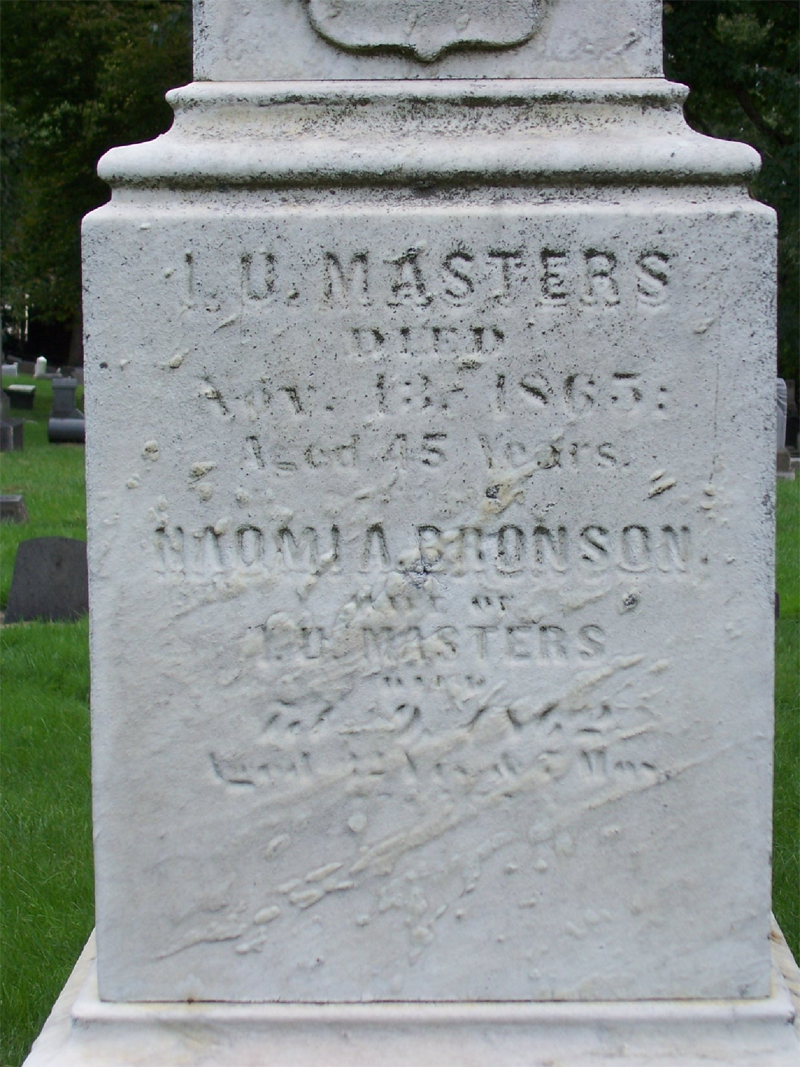Irvine U. Masters 1819 - 1865
Naomi DOD 1863
Harriet A. DOD April 15, 1872, 17 years
Irvine Samuel DOD September 22, 1870, 7 years, 2 months
Julius Henry DOD March 11, 1862, 1 year 5 months
Welcome to Cleveland, Mr. Lincoln
Irvine U. Masters, an Ohio City politician and shipbuilder, was born in New York and moved to Ohio in 1851 with his wife Naomi A. Bronson. He became a trustee of Ohio City and helped William B. Castle (See #5 William Bainbridge Castle) negotiate the merger between Cleveland and Ohio City. Masters served on Cleveland City Council (1854-1863), three times as Council president (1859-1861, 1862-1863). As Council President he was the City representative responsible for welcoming Abraham Lincoln to Cleveland when the President visited on February 15-16, 1861.
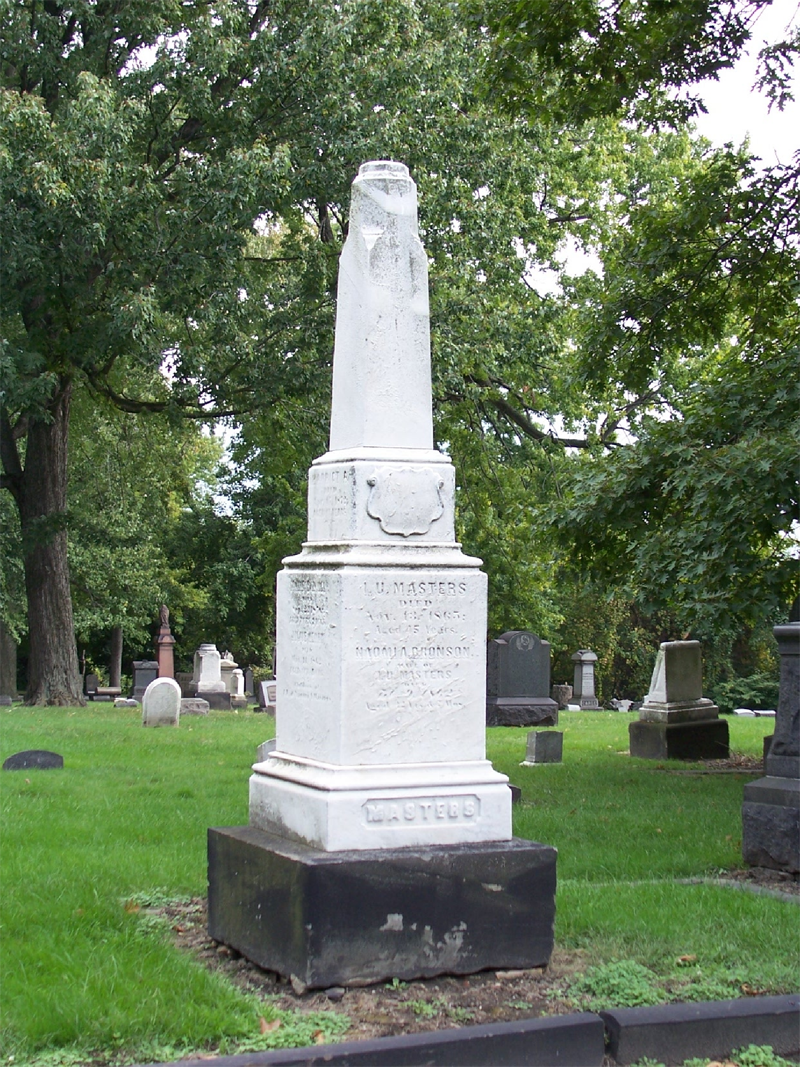
There was a cold, drizzling rain falling that day but weather was of no concern to the large crowd that greeted Lincoln. Four regal white horses pulled the flag-draped carriage with Lincoln holding his stovetop hat on his lap. A cannon thundered a welcome, and there was, what some called, the greatest parade in Cleveland’s history. The Cleveland Grays were in the parade, though few in the huge crowd were aware that the Grays would be called the very next month, the first group to leave Cleveland as the Civil War began. Some twenty suites of rooms were held for the President’s party in the Weddell House, Cleveland’s premier hotel which was located where the Rockefeller Building stands today at the corner of West 6th Street and Superior Avenue. For many years, the room Lincoln himself used was open to the public on the birthdate of the martyred President. Many speeches were given by Cleveland dignitaries and by Lincoln himself. Lincoln spent the night at the hotel and departed the next day, continuing on his trip to Washington, DC.
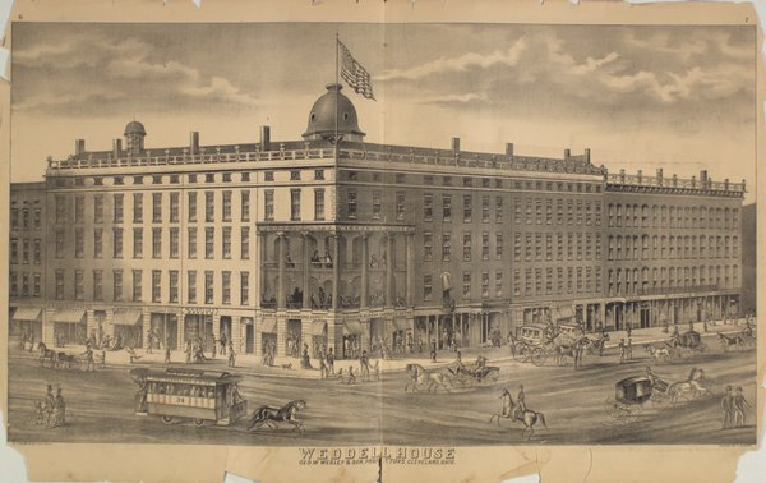
In 1863, Masters, a Republican, defeated incumbent Mayor Edward S. Flint by supporting measures to improve business, showing support for the war effort and holding public meetings and ceremonies for soldiers. But Masters contracted tuberculosis and had to resign his position as Mayor in May of 1864 because of poor health.
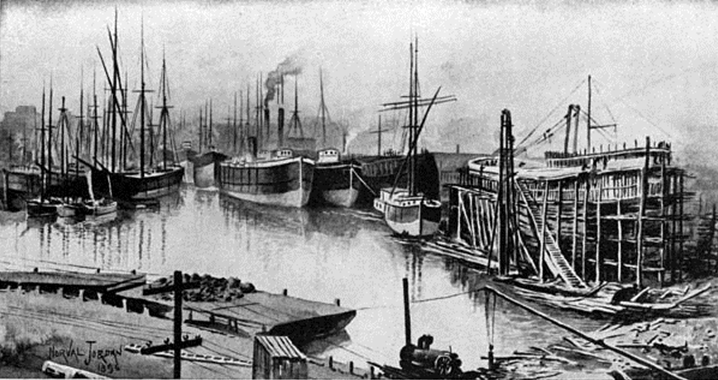
Masters was also a businessman and went into partnership with Elihu M. Peck forming the Peck & Masters shipbuilding company. Peck, born in 1822 in New York, had come to Cleveland at the age of sixteen and apprenticed himself as a shipbuilder in the yard of Philo Moses. Peck opened his own shipyard in 1847 near what is now West 58th Street. Peck and Masters entered into partnership in 1854 and during the next decade built about 50 steam and sailing vessels many of which were among the largest on the Great Lakes. The first ship that Peck built was the 200-ton schooner Jenny Lind, an unusual ship design that has been described as “slightly ugly.” At a time when conventional schooners had severely raked stems, flared bows and rounded sides, Peck’s ungainly creation had a blunt, scow-like bow and an almost square cross-section, however the utilitarian design allowed the Jenny Lind to carry more cargo than other ships of her size. While most of the ships that Peck built, including those while in partnership with Masters, were much more conventional in design, Peck, years later in 1869, designed and built what today is considered the first Great Lakes freighter, the R.J. Hackett. The ship was very box-like in appearance, and looked like an oversized canal boat. Yet its cargo carrying capacity was such that after its launching the design was immediately copied by other shipbuilders and ship owners.
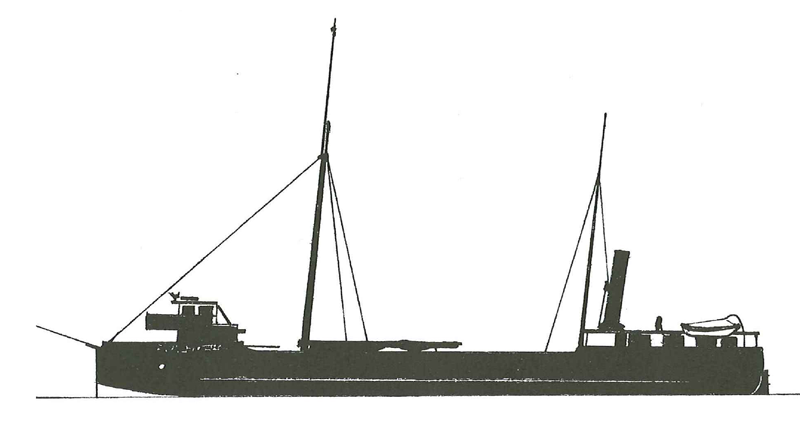
By 1865 Masters’ health had declined to the point that he sold his interests in the firm to Peck. Peck continued in the business, and maintained the business name as Peck & Masters, for the next seven years, building another 50 ships.
Irvine and Naomi had three children: Julius Henry, Harriet A., and Irvine Samuel. Naomi died in 1863. Later that same year, on October 17, Masters married Augusta Prull. After resigning as Mayor, Masters went to New England and Nova Scotia in the summer of 1864 in hope of regaining his health, however, it did not improve. In 1865, Masters relocated to Pine Island, Minnesota, with his family, however his health continued to decline and he died several months later.
Irvine Masters’ wife was Naomi Bronson. Henry G. Bronson is also noted on the monument having died at age 31 in 1861. Henry may have been Naomi’s brother.
Also shown on the monument is Samuel Masters who died at age 50 years in 1818. His relationship to Irvine is unknown.
